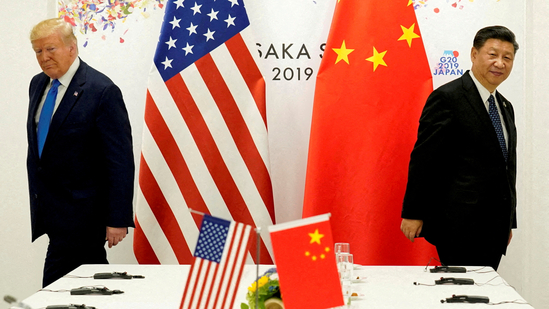Trump Slaps 245% Tariffs on China: Escalating Trade War Sparks Global Economic Concerns
Former U.S. President Donald Trump has fired a new salvo in the ongoing U.S.-China trade war, announcing staggering tariffs of up to 245% on Chinese imports, targeting critical sectors like steel, aluminum, and electronics. This aggressive move, framed by Trump as a bid to “protect American jobs and industries,” risks reigniting economic tensions between the world’s two largest economies, with ripple effects across global supply chains. Here’s a breakdown of the implications and what this means for the global economy.
Tariffs up to 245% on China: Trump’s latest salvo in ongoing trade war
What’s Behind the New Tariffs?
Trump’s latest tariffs specifically aim to curb China’s dominance in manufacturing and exports, accusing Beijing of unfair trade practices like dumping subsidized goods into global markets. The 245% duty primarily impacts Chinese steel and aluminum products, which Trump claims have flooded U.S. markets, undermining domestic producers. Electronics, including semiconductors and consumer tech, also face steep hikes to reduce dependency on Chinese supply chains.
China’s Retaliation and Trade War Risks
China has vowed “forceful countermeasures,” signaling potential tariffs on U.S. agricultural exports (like soybeans) and technology imports. The 2018-2020 trade war saw both nations impose $450+ billion in tariffs, disrupting industries worldwide. Analysts warn this escalation could derail fragile post-pandemic economic recovery, inflate consumer prices, and strain sectors like automotive, construction, and renewable energy reliant on steel and electronics.
Global Economic Fallout
- Supply Chain Chaos: Higher tariffs may force companies to rethink manufacturing hubs, delaying shipments and raising costs.
- Inflation Fears: Consumers could face pricier goods, from cars to smartphones, as companies pass on tariff costs.
- Stock Market Volatility: Trade-sensitive sectors, including tech and industrials, may see sharp declines in global markets.
Political Angle: Trump’s 2024 Strategy
With Trump positioning for a 2024 presidential run, this move reinforces his “America First” agenda, appealing to blue-collar voters in swing states like Ohio and Pennsylvania. Critics, however, argue that tariffs could backfire, hurting U.S. businesses reliant on Chinese imports and sparking job losses in downstream industries.
Tariffs up to 245% on China: Trump’s latest salvo in ongoing trade war
What’s Next?
The Biden administration, which has largely retained Trump-era China tariffs, now faces pressure to respond. Meanwhile, the World Trade Organization (WTO) may intervene, though its role has been weakened by past U.S.-China disputes. Global leaders urge dialogue, fearing a full-blown trade war could destabilize the post-pandemic recovery.
SEO Keywords: Trump China tariffs, US-China trade war, 245% tariffs impact, steel aluminum tariffs, global supply chain crisis, trade war inflation, Trump 2024 trade policy, China economic retaliation.
Will Trump’s tariff gamble revive U.S. manufacturing or trigger a global recession? Share your thoughts in the comments!


1 thought on “Tariffs up to 245% on China: Trump’s latest salvo in ongoing trade war”